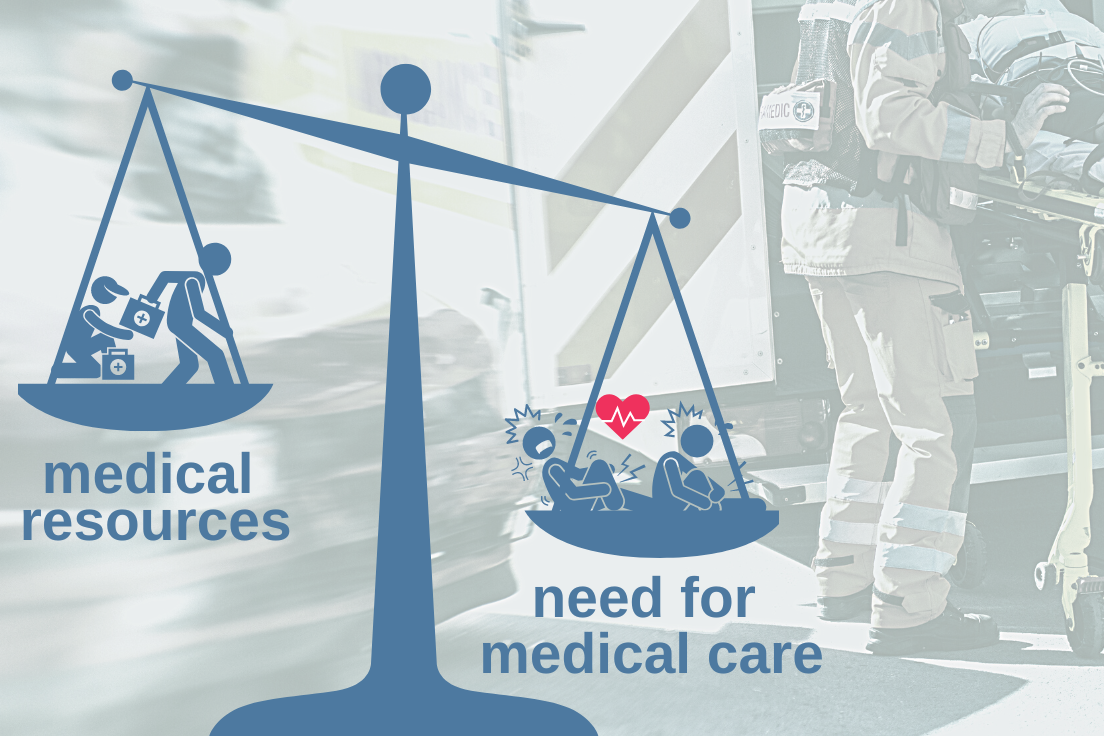MED1stMR transforms current training for medical first responders (MFRs).
MFRS will be better prepared for highly stressful real-life mass casualty incidents (MCIs)
Read all about the definition of mass casualty incidents and how medical first responders train now and what challenges they face – or download the summary:
Definition MCI
At mass causality incidents (MCIs), available resources are insufficient for the urgent need for medical care and many injured people are affected.
MFRs have to assess the scene (situational awareness & evaluation) and then perform diagnosis and basic life-saving support (medical decisions & triage) and execute troubleshooting and organisation of the scene (command post, additional support etc.). This means coping with many different stressors at the same time.
Current training
MFR organisations train for such situations, besides theory, by simulation. Simulation varies from notepad exercises (number of people, injuries etc. all written on notes) to large-scale training simulations at real-life closed-down locations (e.g. a tunnel) and re-build environments including briefed role players with more or less realistic injuries (from post-it injuries to theatre make-up realistic wounds) and/or manikins and a large number of processes to simulate also the surrounding activities and experiences.
Current challenges
But simulations like these are either not realistic enough, extremely resource intensive (preparation, monitoring and debriefing) or sometimes even dangerous (real broken parts etc.). Therefore, they are very rare and available only for very few medical first responders per year.
Moreover, the state of the trainees (stress, overload etc.) is most of the time not considered during training. Consequently, some organisations enhance their practice training with technology solutions including VR or augmented reality (AR) as a second option. These technologies are often extremely specialised or not enough adapted to MFR’s needs or lack haptic solutions and/or the involvement of time (affecting the change of the situation, the injuries etc.).
Crisis and MCIs (human-made or natural disasters) are rising and MFRs are more and more often confronted with such highly stressful situations. At the same time training time is very limited and should be used as efficiently as possible.
Solutions for the future
Evidence shows that the use of VR is useful when the training domain is complex and difficult to master. Moreover, the effectiveness of XR simulation to train MFRs for MCIs has been shown in 13 out of 18 studies. Another important factor in medical simulation is the haptic and sensory experience during training. The stress of the trainees during training also should be considered.
Therefore, the MED1stMR training solution merges the technology of VR and enhanced VR-enabled simulation manikins in a mixed reality (MR) solution combined with smart wearables to measure the biosignals of the trainees during training and to steer the training in accordance with their capabilities to better train decision-making, skills and resilience.
A digital asset database allows to select different wounds/medical states and their evolvement during training, the adaption of environments (number of patients, incident type, other involved people like bystanders, firemen, scenario editing etc.) as well as the immersive experience of video, audio and haptics combined with the multi-dimensional debriefing options of digital training.
A replacement of real-life training?
Such solutions will not completely replace large-scale real-life training, but they will deliver additional easier-to-access and less resource-intensive training options. By this, a higher frequency of MCI training and consequently higher preparedness and habituation with such situations can be achieved.
For more information and details in the future, register for our newsletter:

